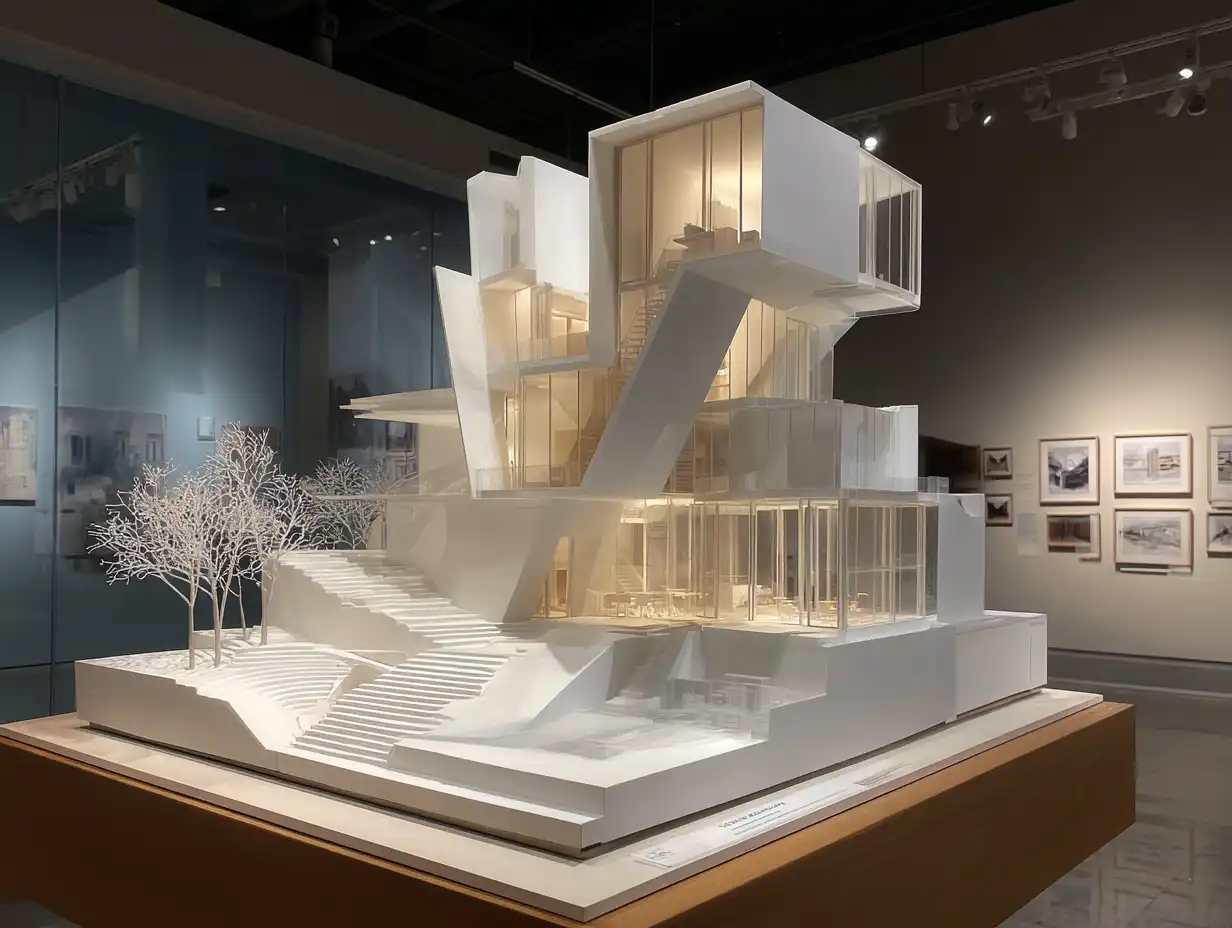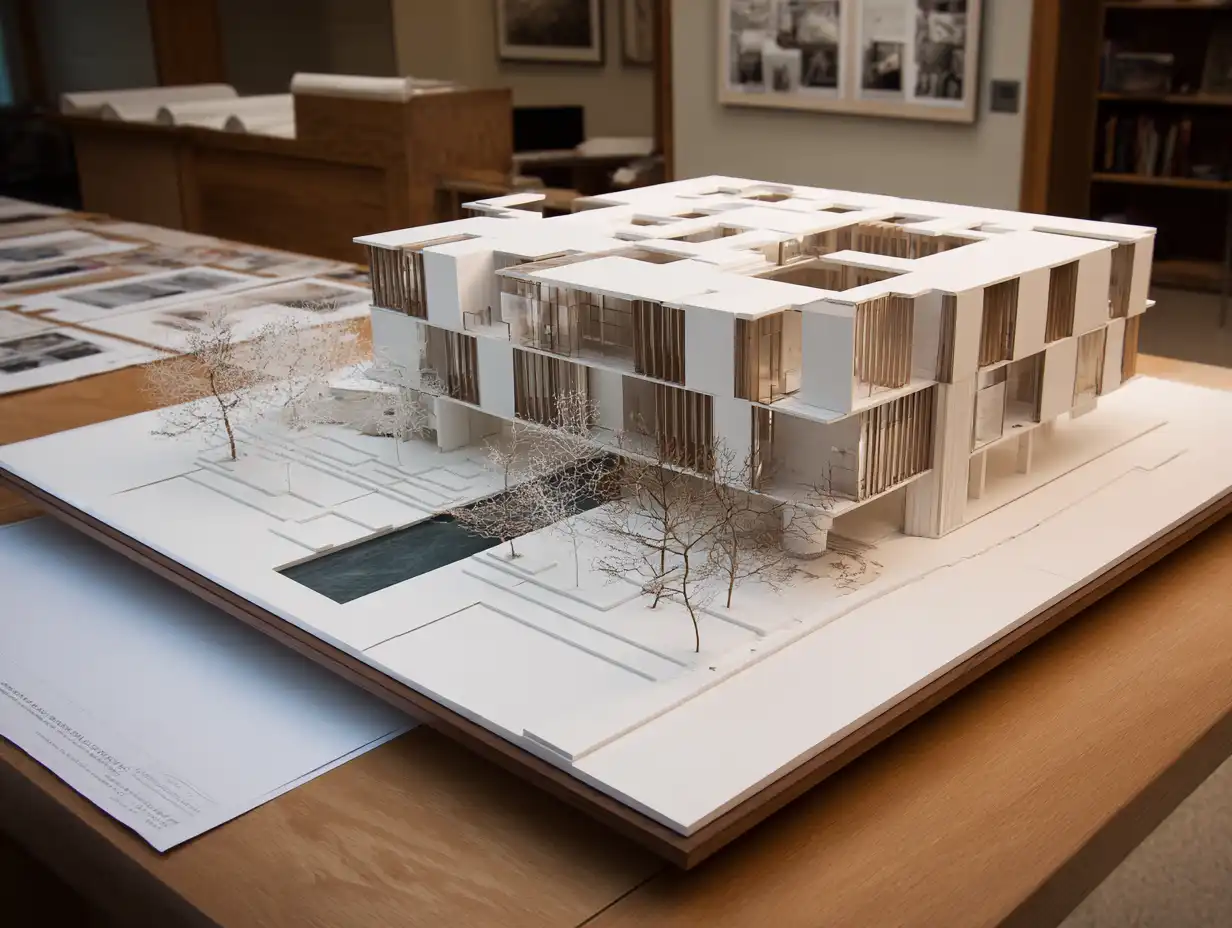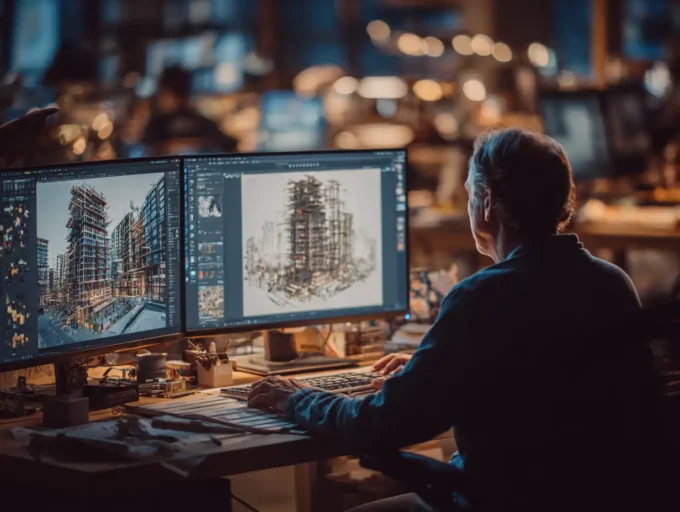In the world of architecture, models serve as more than just visual representations; they’re powerful tools that shape our design process. By translating abstract ideas into tangible forms, architectural models help us visualize space, materials, and scale. This hands-on approach allows us to explore the nuances of our designs and make informed decisions before construction begins.
As we delve into the impact of architectural models on design, we’ll uncover how they influence everything from aesthetics to functionality. Understanding this relationship not only enhances our creative process but also ensures that our final projects resonate with both the environment and the community. Join us as we explore the vital role these models play in shaping our architectural visions.

Understanding Architectural Models
Architectural models serve as pivotal elements in the design journey. They bridge the gap between conceptual ideas and physical representations, enabling architects to examine their designs critically.

Definition of Architectural Models
Architectural models are physical or digital representations of structures. These models can range from simple sketches to detailed 3D prints and are employed at various stages of design. They allow the exploration of proportions, spaces, and materials, making complex ideas more assessable.
Importance in Design Process
Architectural models hold significant importance throughout the design process.
- Visualization: Models help architects visualize spatial relationships and design elements effectively.
- Communication: Models serve as universal tools for communicating ideas with clients, engineers, and stakeholders.
- Decision-Making: Models facilitate informed decision-making by allowing designers to assess aesthetics and functionality before construction begins.
- Feedback: Models enable us to gather feedback from clients and collaborators, leading to improved design iterations.
- Testing: Models assist in testing design concepts against real-world factors such as light, shadow, and environmental impact.
Types of Architectural Models
Architectural models can be categorized into various types, each serving distinct functions in the design process. We explore the three primary types: physical, digital, and conceptual models.

Physical Models
Physical models provide tangible representations of structures. These models range from basic cardboard sketches to intricate wood or acrylic designs. Architects use physical models to:
- Visualize Scale: Physical dimensions become clearer, allowing for a better understanding of space.
- Experiment with Materials: Different textures and finishes can be physically represented.
- Communicate Design Intent: Stakeholders can directly interact with the model, fostering discussions about design elements.
Physical models are particularly useful during the early stages of design and in presentations.
Digital Models
Digital models utilize software applications to create virtual representations of architectural designs. These models allow architects to:
- Simulate Environments: Features like lighting and shadows can be incorporated, giving a realistic view of the design.
- Modify Designs Easily: Adjustments can be made rapidly, facilitating quick iterations.
- Share with Stakeholders: Digital files can be easily distributed, enabling collaboration across teams.
Digital models are advantageous for complex projects, as they allow for detailed analysis and exploration of numerous design options.
Conceptual Models
Conceptual models focus on conveying the underlying ideas of a design rather than specific details. They serve to:
- Outline Design Philosophy: Emphasize key concepts and intentions behind the architecture.
- Facilitate Early Discussions: Spark conversations about aesthetic and functional elements.
- Encourage Creativity: Foster innovative thinking by simplifying designs to their core elements.
Conceptual models often appear in the initial phases of a project, guiding the overall vision before refining into more detailed representations.
Impact on Design Outcomes
Architectural models significantly influence design outcomes by enhancing visualization and deepening spatial comprehension. These models shape the overall effectiveness of a project through their various forms and applications.

Visual Representation
Visual representation in architectural modeling creates a clear, tangible picture of design ideas. Physical models allow us to experience three-dimensional structures firsthand, clarifying dimensional relationships and allowing for material experimentation. Digital models enhance this representation by providing realistic renderings that simulate lighting and environments. Enhanced visualization aids in identifying potential design challenges early, enabling adjustments before the construction phase. Effective visual tools foster collaboration among team members and facilitate discussions with clients, helping to align expectations and interpretations of the design.
Spatial Understanding
Spatial understanding is crucial in architecture and allows us to grasp how different elements interact within a design. Models improve our ability to perceive scale, proportions, and relationships among spaces. By manipulating physical models, we explore different viewpoints and assess circulation patterns intuitively. Digital models enhance this experience through virtual walkthroughs, enabling stakeholders to engage with the space dynamically. Comprehensive spatial understanding contributes to efficient layout planning, ensuring the final design meets functionality and aesthetic goals. Early identification of spatial conflicts through modeling enhances overall design coherence and practical use.
Case Studies
Exploring real-world examples illustrates how architectural models shape design outcomes significantly. We highlight successful design examples and analyze lessons learned from failures to emphasize the importance of effective modeling.

Successful Design Examples
-
The Sydney Opera House
The Sydney Opera House exemplifies the impact of architectural models on complex designs. Its iconic sail-like structure emerged from physical models that allowed architects to study shape, materials, and spatial relationships. These models informed iterations, contributing to its successful realization as a cultural landmark.
-
The Guggenheim Museum Bilbao
The Guggenheim Museum in Bilbao showcases how digital modeling influences contemporary design. The use of advanced software created detailed virtual models, facilitating experimentation with irregular forms. These digital models allowed stakeholders to visualize the building in its urban context, enhancing community engagement and gathering valuable feedback.
-
Farnsworth House
The Farnsworth House illustrates successful integration of architecture with nature. Physical models enabled architects to assess scale and placement within the landscape. This model-driven approach contributed to the house’s minimalist aesthetic, ensuring harmony with its surroundings while addressing functional design aspects.
Lessons Learned from Failures
-
Vdara Hotel
The Vdara Hotel in Las Vegas faced design challenges due to its reflective façade. Insufficient modeling of environmental impacts led to unexpected heat concentration, causing discomfort for guests. This example underscores the necessity of comprehensive modeling to consider real-world factors and avoid future complications.
-
The Sagrada Familia
The Sagrada Familia’s extended construction period reveals the need for evolved modeling techniques. Early models lacked precise detailing, which resulted in miscalculations affecting the build timeline. This situation highlights the importance of refining models throughout the design process to enhance accuracy and efficiency.
-
Millennium Dome
The Millennium Dome in London serves as a reminder of project management challenges in large-scale developments. Initially, physical models failed to adequately demonstrate structural integrity under varying conditions. Subsequent digital simulations addressed these shortcomings, emphasizing the role of diverse modeling techniques in preventing construction issues.
These case studies reinforce the idea that architectural models play a crucial role in achieving successful design outcomes while illustrating the consequences of inadequacies in the modeling process.
Future Trends in Architectural Modeling
The future of architectural modeling is influenced by technological advancements and sustainable practices. These trends shape how we approach design and execution in modern architecture.

Technological Advancements
Technological advancements continuously redefine architectural modeling. We observe an increased integration of Building Information Modeling (BIM) technology, which enables detailed digital representations of architecture. BIM provides us with real-time data integration, allowing for efficient collaboration among all stakeholders. Advanced 3D printing techniques also emerge, enabling the quick production of intricate physical models. Augmented reality (AR) and virtual reality (VR) applications allow us to create immersive experiences, allowing stakeholders to engage with designs in a truly interactive manner. Generative design software offers innovative solutions as it utilizes algorithms to produce multiple design options, incorporating constraints related to functionality and aesthetics.
Sustainable Practices
Sustainability increasingly dictates architectural modeling trends. We prioritize eco-friendly materials and construction methods through our modeling processes. Using Building Performance Analysis (BPA), we evaluate energy efficiency and environmental impact before construction begins. This data-driven approach ensures that our designs align with sustainable practices. Utilizing parametric design enables us to optimize material use by considering performance metrics during the modeling phase. Additionally, incorporating climate-responsive modeling leads to designs that minimize energy consumption and promote harmony with surrounding ecosystems. By focusing on sustainability, we create architectural solutions that meet both present and future needs.
Conclusion
Architectural models significantly shape our design process, transforming concepts into tangible realities. By enhancing visualization and enabling improved spatial comprehension, these models provide critical insights that guide our decisions.
Physical models allow us to directly engage with three-dimensional structures, while digital models offer detailed renderings that simulate real-world conditions. This improved visualization helps us identify potential design challenges early, promoting collaboration and ensuring alignment with client expectations.
Through case studies like the Sydney Opera House and the Guggenheim Museum Bilbao, we see clear evidence of how effective modeling leads to successful design outcomes. In contrast, failures such as the Vdara Hotel highlight the need for meticulous modeling practices.
As we look to the future, we recognize the importance of integrating advanced technologies like BIM and sustainable practices into our modeling efforts. Embracing methods such as Building Performance Analysis ensures our designs remain efficient and environmentally conscious, addressing both present and future architectural needs.
- 3D models in architecture
- architectural design insights
- Architectural Design Tools
- architectural model design
- architectural model impact analysis
- architectural planning and modeling
- architecture and design process
- architecture model influence
- architecture project modeling
- benefits of architectural models
- conceptual modeling in architecture
- design strategies in architecture
- how models affect architecture
- impact of architectural models
- importance of models in design
- innovation in architectural modeling
- model-based design in architecture
- modeling techniques in architecture
- role of models in architecture
- understanding architectural models















Leave a comment